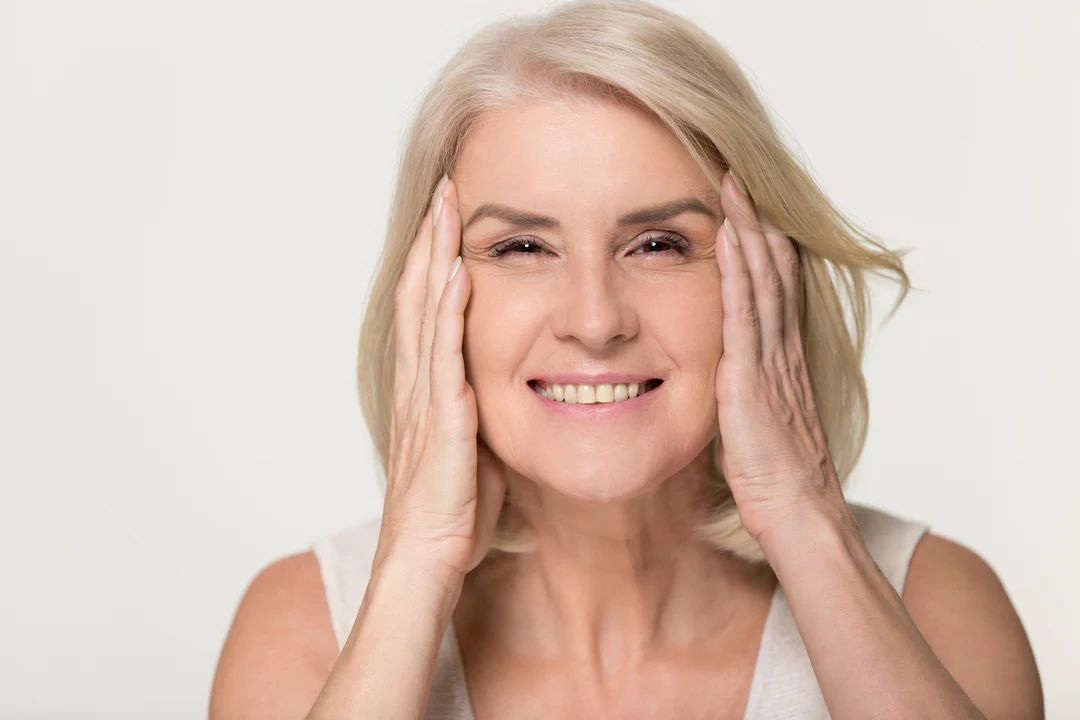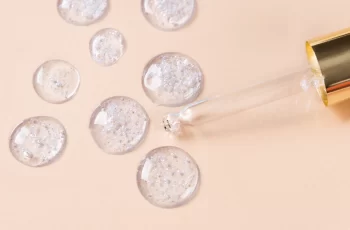
Can You Layer Peptides and Retinol?
It’s easy to consider layering skincare as an easy task when you have a vague understanding. If you are new to all thing’s beauty, then the thought of layering skincare products, especially if they go by the name of as unusual as peptides and retinol, can feel very daunting. But don’t panic, things will make a lot more sense after today’s blog post, so let’s dive in and find out can you layer peptides and retinol.
Before we get started, here is a brief recap of the skincare benefits of peptides and retinol and the results you can expect to see.
What are the skincare benefits of peptides?
Reduces the appearance of fine lines and wrinkles
Helps to strengthen the skin barrier
Provides anti-inflammatory properties in the skin
Helps make the skin feel and look firmer
Boosts the production of collagen
Repairs damage caused to the skin barrier
What are the skincare benefits of retinol?
Combats signs of ageing, such as fine lines and wrinkles
Brightens the complexion giving an all over glow
Regulates oily skin types
Reduces the frequency of breakouts and acne
Fades the pigmentation of dark spots and hyperpigmentation
Can you use peptides and retinol together?
Yes, indeed you can, using peptides and retinol together is something that needs some careful time and consideration due to the high potency of these two ingredients. Many skin experts believe as effective as peptides are for the skin, they tend to penetrate too far into the lower layers. This is something that can help many of those with oily or combination skin types, but those with a dry or sensitive skin it can lead to skin irritation and severe dryness.
If you are unsure about using peptides and retinol together, you can alternate when you apply each of these ingredients, ideally leaving retinol for your evening routine due to any UV exposure leaves the potent vitamin A useless and ineffective at delivering its results. If you are wanting to know more about using peptides and retinol together, check out our dedicated blog post.
What goes on first peptides or retinol?
If you are deciding to layer peptides and retinols together then applying retinol first would give you optimal results. This will give your skin the chance to reap the rewards of many benefits provided by retinol followed with the nourishment of peptides. This will counteract any over-drying of the skin and keep the protective barrier fully functioning.
If you are using both ingredients separately then it is best to apply peptides during your morning routine and retinol in the evening. This is not only because retinol needs to be applied overnight, but also because our skin has a daily circadian rhythm, meaning its needs change between AM and PM every 24 hours. For the morning your skin needs a helping hand in protecting itself from exposure to UV rays, pollution, and other free radicals, whereas the evening requires help repairing already existing damage.
Can you use peptides in the morning and retinol at night?
Absolutely, by using peptides in the morning and retinol at night you are ensuring your skin gains the best results from each of these powerhouses. Even if you have built the tolerance towards the potency of retinol, you can still unintentionally cause the skin to become irritated. By using peptides in the morning, you are giving your skin a boost in nourishment whilst ensuring the peptides can kick start the collagen production. You are then able to repair damage caused from any exposure to free radicals throughout the day. If I could add a brief side note, retinol can cause an increase in your skin’s photosensitivity so ensuring you apply a daily SPF of 30 and above, even on days that are cloudy and raining. Are peptides good for wrinkles? Yes, peptides are very effective at reducing wrinkles. Peptides are short chains of amino acids and are able to form building blocks of collagen and elastin in the lower layers of the skin. When applied topically onto the skin in serum or moisturiser formulations the peptides are able to act as messengers ensuring the compounds of collagen are stimulated to create more. This then results in the skin looking firmer and feeling tighter with a youthful bounce and healthy complexion. What can you combine with peptides? Although peptides are generally considered highly effective and are easily tolerated by other skin ingredients, it is considered best to avoid using vitamin C in conjunction with peptides. Vitamin C is a potent antioxidant that delivers several results, from reducing hyperpigmentation and dark spots, it is also able to combat fine lines and wrinkles. The trouble with mixing it with peptides is the fact they cancel each other out rendering each of them useless on the skin, and in some cases can often cause irritation and dryness. Can you layer serums over retinol? Yes and no, this is because the consistency of the product enriched in retinol plays an important role. As a general skin rule the best way of layering skincare products is from thinnest to thickest. With serums often formulated as a lightweight, water or gel like consistency they tend to absorb into the skin rapidly allowing you to apply thicker moisturisers and oils on top. When it comes to retinol formulations you will find that it comes in serums, face oils and moisturisers which are applied towards the final steps of your routine. If you wanted my opinion, I would suggest using two serums, one enriched in retinol and another in hyaluronic acid. This will ensure you avoid any severe skin dryness or irritation, but still benefit from the skin renewal properties of retinol. There you have a little more information about how you can layer peptides and retinol, don’t forget if skin is your thing you can find more over on the Procoal Instagram so come and give us a follow.
DQH Can I use salicylic acid first and then vitamin C?
It’s easy to create a skincare routine, but knowing how to use it is another thing entirely. In most cases, if you’re not getting the desired skin results, it could be due to the layering of conflicting ingredients. So, is it possible that salicylic acid and vitamin C are such ingredients? Or are these active ingredients the duo that’s been missing from your skincare routine? If you want answers, stick around because today we are going to explain the benefits of salicylic acid and vitamin C and how they can be used in your daily life.
What are the benefits of salicylic acid for skin?
Salicylic acid is one of the most commonly used beta hydroxy acids and is favored by many people with oily, acne-prone skin. This acid is derived from willow bark, and unlike its water-soluble relatives (called alpha-hydroxy acids), salicylic acid is oil-soluble, which means it can penetrate deeper into the lower layers of the skin. Once it reaches the lower layers, it can help unclog pores of excess sebum, dirt, bacteria, debris, and impurities. This results in clearer skin tones and greater definition.
Not only does salicylic acid benefit the underlying layers, but the outer surface of the skin benefits as well. When applied to the skin, salicylic acid removes the buildup of dead skin cells. This is accomplished by breaking the bonds that hold dead cells to the surface. Over time, this can cause the complexion to look dull and prone to acne, blackheads, and other blemishes.
If you’d like to learn more about salicylic acid and how it can improve your skin, check out this dedicated blog post from a beauty insider.
What are the benefits of vitamin C for skin?
Vitamin C is considered one of the most powerful antioxidants, which means it is very effective at fighting free radicals and preventing them from causing further skin damage. Examples of free radicals include pollution, central heating, UV rays and harsh climate. They attack proteins, fats and cell membranes as soon as they come into contact with the skin, causing signs of premature aging such as fine lines and wrinkles as well as hyperpigmentation, flaky patches of skin and loss of elasticity.
Many people usually prefer to use vitamin C in their morning routine as this ingredient gives the complexion a radiant glow. You’ll also find that vitamin C can target areas of hyperpigmentation, plumping the skin and reducing the appearance of fine lines and wrinkles.
The thing about vitamin C is that there are a lot of outdated studies going back to the 1950s that describe vitamin C as an unstable skin component. Thanks to improvements in modern technology, this is no longer the case as all products now contain a stable form of vitamin C.
Visit The Beauty Insider to learn more about vitamin C. So please check out our blog post.
Can I use salicylic acid first and then vitamin C?
Yes, you absolutely can. In fact, it’s thought that using salicylic acid before using vitamin C ensures it penetrates faster and works faster.
This is an efficient way to utilize two power sources, and the reason has to do with pH. For example, the skin’s natural pH is about 4.7, making it slightly acidic. Salicylic acid and vitamin C are also both acidic, and you’ll find that vitamin C is absorbed quickly into the skin. Therefore, using salicylic acid beforehand can increase the acidity of the skin and allow vitamin C to penetrate into the skin faster.
While this is considered an effective way to combine two powerful ingredients, you need to be aware of your skin type and how it reacts to certain active ingredients. Even people with perfect, normal skin can experience skin sensitivity and irritation. Therefore, always consult a doctor or dermatologist before using any new products on your skin.
It’s also important to follow skin application rules. In this case, you need to use the product correctly to ensure you get the best results for your skin. If you’re not sure what I mean, the basic rule for skin is to start with the thinnest consistency and work your way up to the thickest consistency. This prevents a barrier from forming on the surface, preventing other active ingredients from penetrating the skin.
Can I use salicylic acid at night and vitamin C in the morning?
Yes, absolutely, this is considered the most effective way to get returns without any adverse side effects. This is because there is enough time between applications to ensure that the skin’s pH levels return to balance.
You’ll also find that Vitamin C is rich in antioxidants and is perfect for use in the morning to ensure your skin is protected and looking its healthiest. Due to the small size of salicylic acid molecules, it is an acid that is able to reach the deepest parts of the skin. While this is effective at keeping skin clear, it also increases the risk of irritation and photosensitivity. Therefore, many people prefer to use powerful BHAs in their evening routine without exposure to UV rays, pollution, or harsh weather.
Warning: If you avoid using sunscreen every day, none of these ingredients will do what your skin needs. The combination of chemical peels and powerful ingredients increases the risk of further damage to the skin’s surface. Use SPF 50 every day to keep your skin protected and your lipid barrier healthy, even on cloudy days, keeping your skin in top condition.


